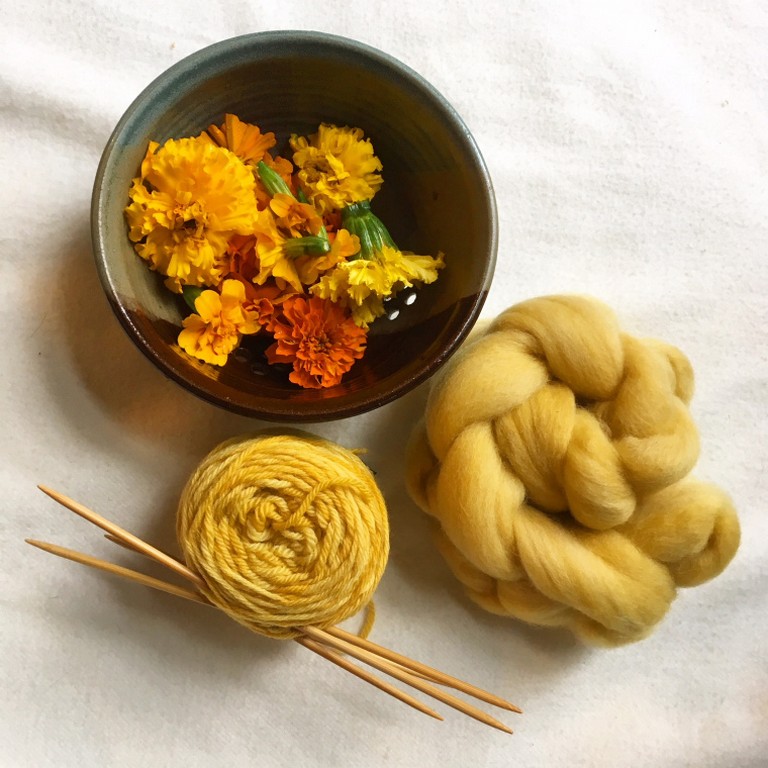THE ART OF (FLORAL) DYEING
28/01/2020 2024-10-11 19:59THE ART OF (FLORAL) DYEING
In recent times, the interest in natural dyes has grown due to toxic and allergic reactions associated with synthetic dyes. Natural dyes obtained from flowers, plants, shrubs etc. are earth-friendly and are biodegradable resources. These dyes produce colours that are difficult to be obtained from their synthetic counterparts. The article concentrates on natural dyeing with an emphasis on Floral dyeing, a sustainable method of creating natural fabric dye with discarded flowers by giving it a new lease of life.
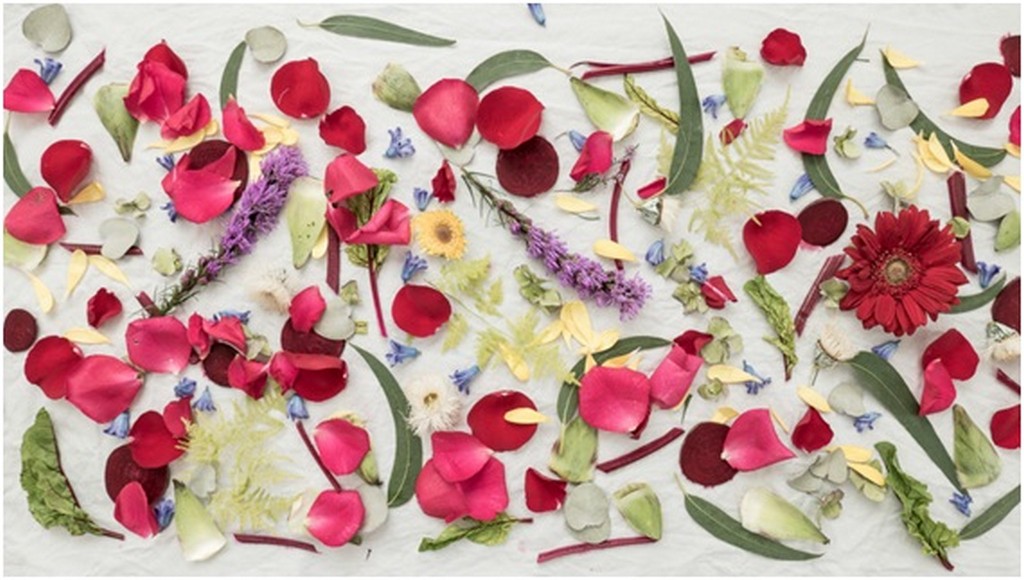
Research shows that synthetic dyes release harmful chemicals which are detrimental to human health. Also, the colours found in nature, are so much more vibrant and beautiful than artificial colours. Flowers of Marigold, China rose, Butterfly Pea, Bougainvillea, Cineraria and Alkanetetc have been extensively used for dyeing fabric.
There are many methods used to extract dyes from plants and use them to colour fibres. Extraction of dyes from flowers is usually favoured at an optimum temperature of about 80-90°C and for 1 hour. The sample of the fabric to be dyed is first mordanted with mordant agents like Alum, Copper Sulphate, Ferrous Sulphate, Stannous Chloride, etc. is then taken out and squeezed after mordanting. It is then immersed in a dye bath for 2 hours at a temperature of 80°C after which it is taken out, dried and soaped with non-ionic soap at room temperature for 10 minutes. The next step is rinsing and line dyeing. It could take 1 to 6 hours for them to be nicely dyed depending on the flower type. The longer the flowers are left, the more intense the colour will be.
MORDANTING
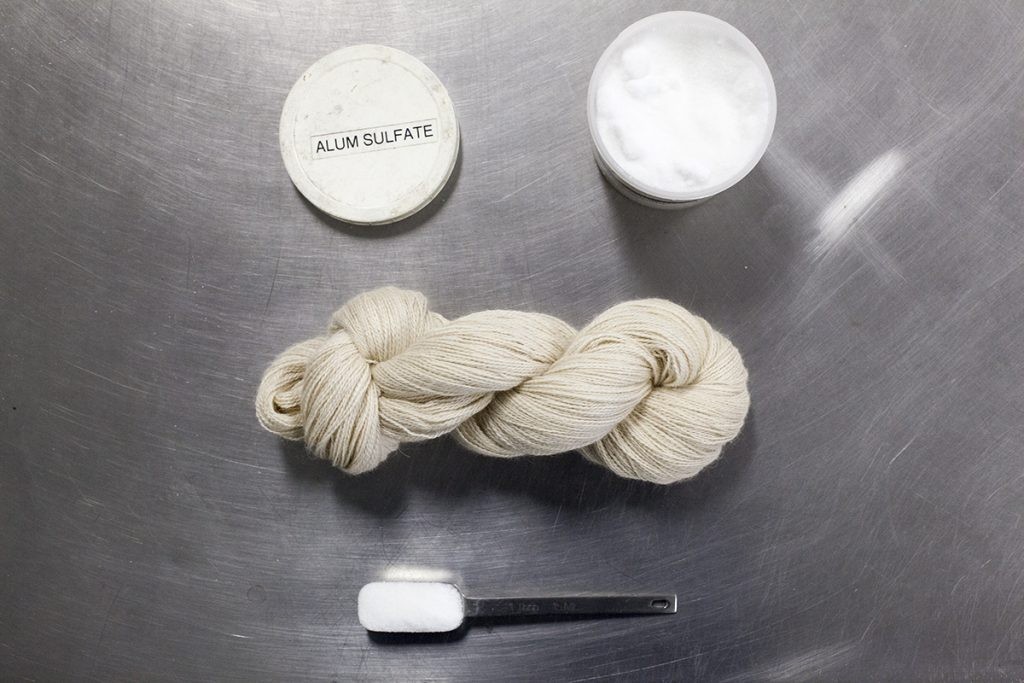
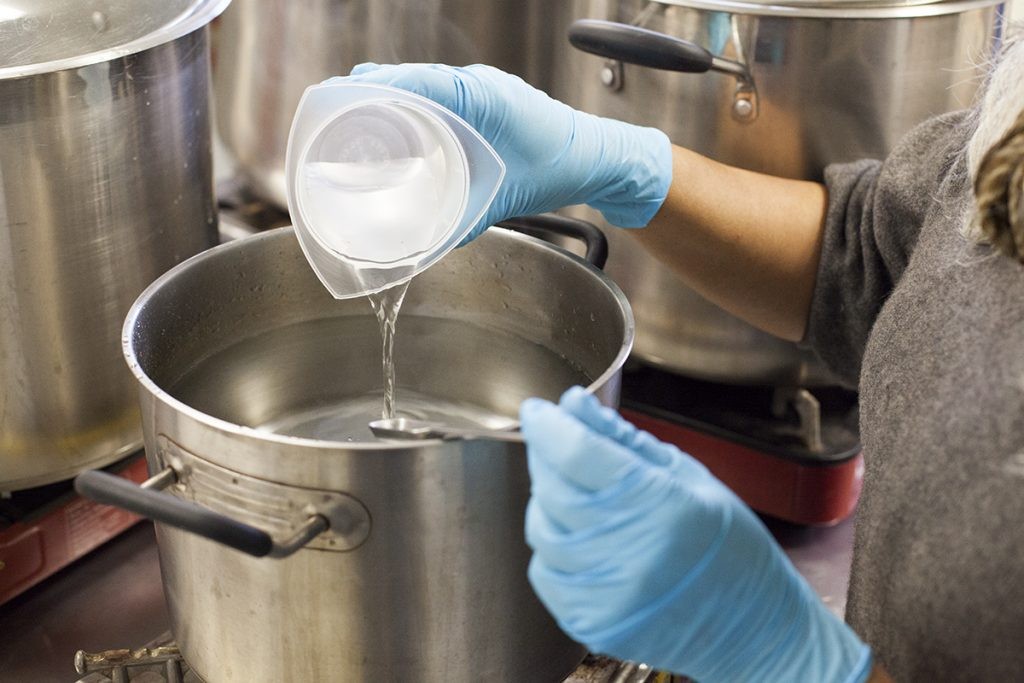
The colour of flowers, such as the red in roses and yellow in marigolds, are found in pigments that are decided upon in the hereditary genome of the plant. Different shades of yellow dye can be obtained from Calendula, Daffodils, Marigold, and Dahlia. Orange dye can be derived from Coreopis, pink dye can be derived from Roses and Camellias; purple dye from Lavender, Indigo and Coneflowers, green dye from Yarrows, red and maroon dye from Hibiscus. The most commonly used flowers for dyeing are Saffron, Hollyhocks, Royal Poinciana and others.
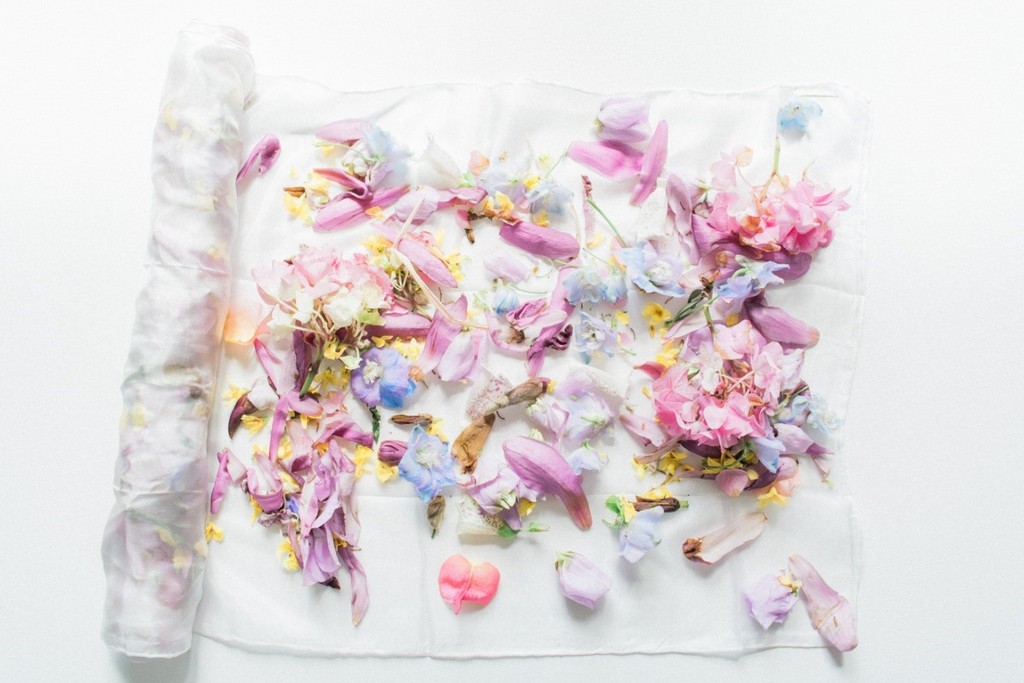
Today there are many companies as well as individuals and designers who work with natural dyes having realised the impact of synthetic dyes on the environment as well as human health. Brooklyn based artist, Cara Piazza works with florists, restaurants, organic providers like spice markets to collect to collect their waste and uses them to dye clothing and accessories. She also offers a service to brides wherein they can turn their wedding bouquets into kimonos instead of throwing them away.
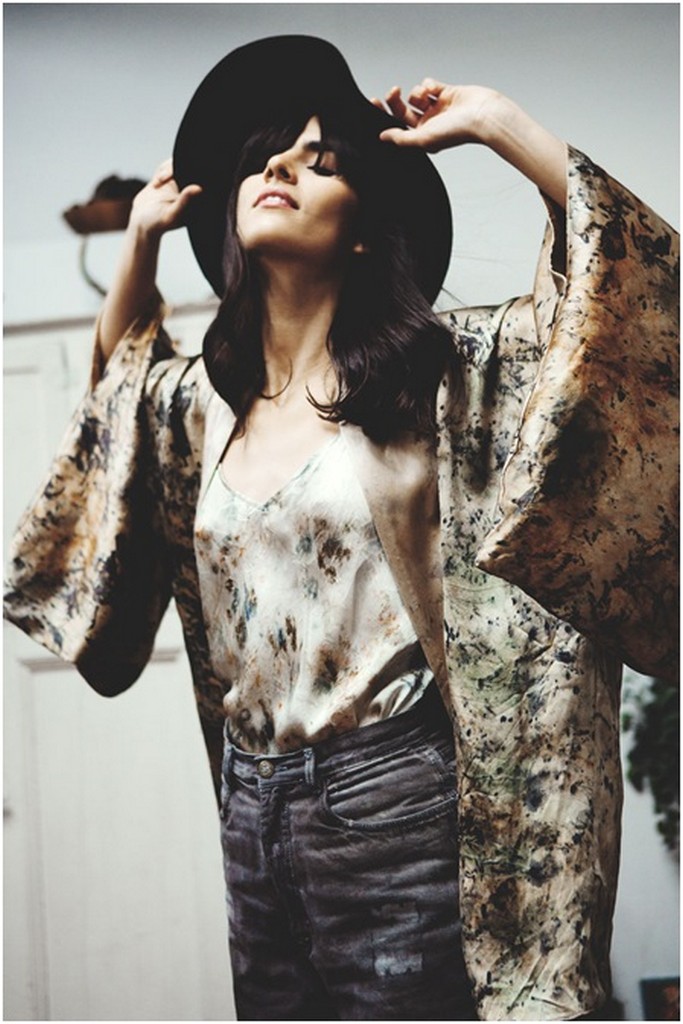
Aranya Natural is an organisation in Munnar, India where its members work with designers to create naturally dyed fabrics. The forests of Munnar present a palette of colours to choose from and they make dyes from Eucalyptus, Eupatorium, pine cones, Indigo, Turmeric etc.
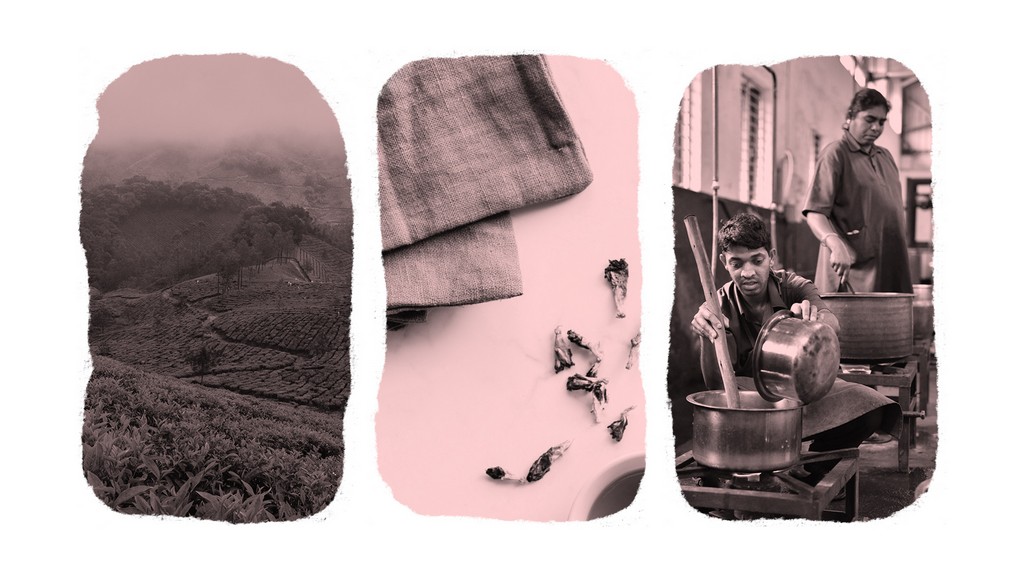
Incentives and steps are being taken by many people to extract dyes from discarded flowers too. An example of this is the discarded floral waste from the Mahabodhi temple in Bihar is now used to produce natural dyes and increase sale of Khadi clothes. People believe in the sentimental value of the flowers and leaves of this tree and the cloth infused with colours made from these flowers would be certainly valued.
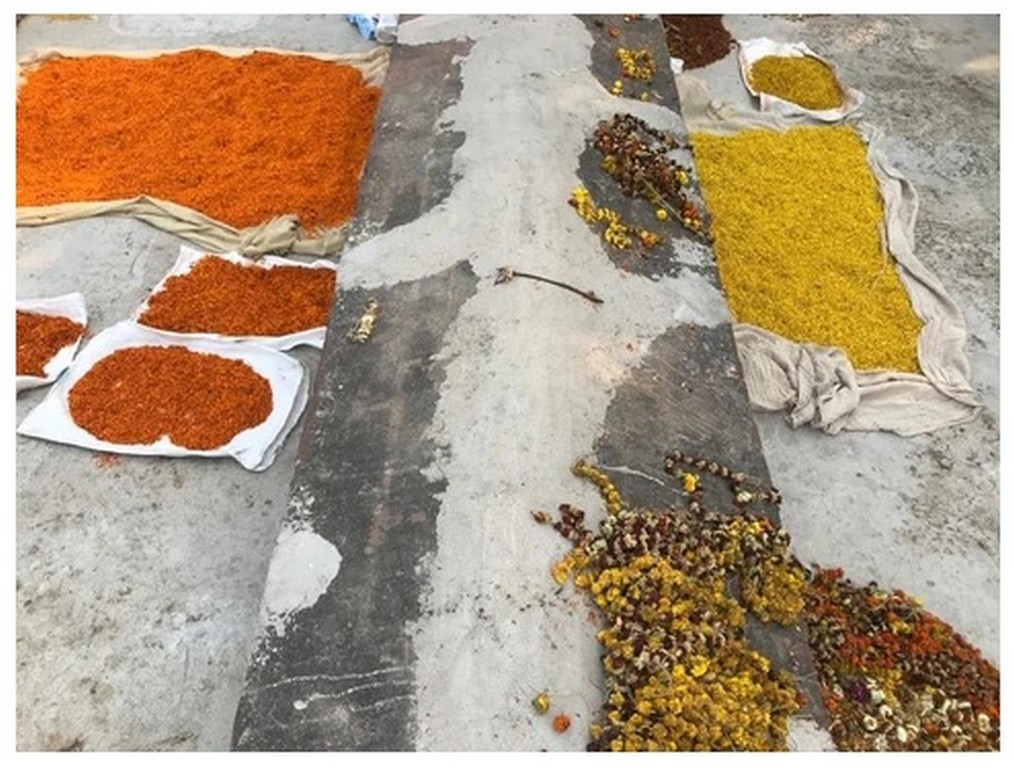
For many the process of extracting the dyes from their natural sources connects them to their work, and gives them control over each step of creation and it’s extremely rewarding when you are able to capture that colour on a piece of fabric and wear it.
Blog by: Anoushka Makhija
BSc. Fashion and Apparel Design 2019
#jdinstitute #jdinstituteoffashiontechnology #jdinstituteoffashiontechnologyindia #jdinstituteoffashiontechnologybangalore #globalleagueinstitute #life@jd #artanddesign #bachelorofscienceinfashiondesign #diplomainfashiondesign #design #fashiondesign #dyeing #mordanting #floraldyeing #naturaldyeing #sustainability #biodegradable #khadi #mahabodhi #dyes #aranyanatural

